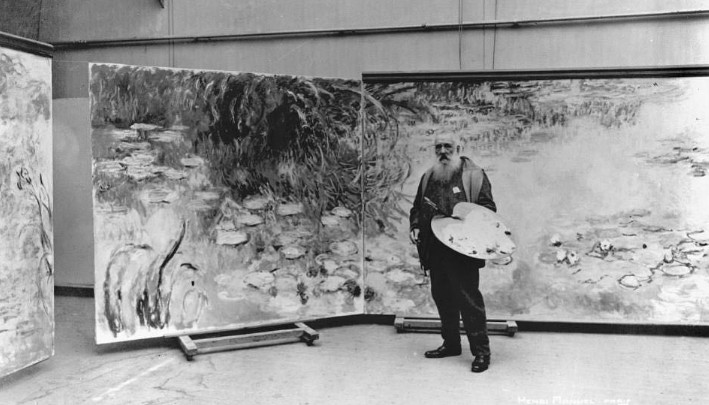He drew caricatures for pocket money and was widowed twice: Claude Monet painted while serving the vision

Claude Oscar Monet was born on November 14, 1840, as the second child of Claude Adolf and Louis Justin Monet. The family moved to Le Havre, Normandy. As a young man he drew cartoons and displayed them in shop windows, and even sold them for pocket money. He left high school when his mother died and left to live with his aunt.
View this post on Instagram
The local painter Eugene Buden became interested in the young Monet and soon began to teach him painting techniques. He went to Paris in 1859, and two years later to Algeria where he served his military service, but there he fell ill and after two years returned to Paris, delighted by the colors and light of the south.
Continuing his education, he met Renoir, Basil and Sisley with whom he developed a new approach to painting, a painting technique with rough brush strokes, light effects and strong colors. He exhibited for the first time at the Salon in 1865, achieving great success.
View this post on Instagram
At that time he also met Camille Donsier, who became his life companion. From 1870 to 1899, Monet constantly moved and traveled, returned to France and painted landscapes with Renoir, and prepared his own floating studio.
The group of painters who will be called Impressionists has already been created.
View this post on Instagram
In 1872, Monet created "Impression - Sunset", which was first exhibited in 1874, at an exhibition that would mark a turning point in the art world.
In 1877, Monet devoted himself to a series of paintings at the Saint-Lazare railway station. According to Renoir's notes, when the station manager heard that Monet wanted to paint it, he stopped the trains, closed the platforms, and the locomotives spewed steam just as Monet wanted while he painted for days.
View this post on Instagram
Camille's wife died in 1879, and that winter lonely Monet painted the ice floating on the river. By 1890, he had improved the technique, rejected heavy colors and used only light and transparent ones. He achieved a flicker of light.
View this post on Instagram
He naturally began painting the same landscape at different times of the day. He moved to London again, painted the Thames and remarried Alice.
Although later broken by the family tragedy, by the death of Alice and then of his eldest son Jacques, Monet continued to paint with a miraculous will, studying the effects of light and building the largest studio in Giverny.
View this post on Instagram
His eyesight weakened, he painted desperately in nature, alone and sad, scared and discouraged. The light which he glorified for Monet in his work was extinguished abruptly on December 5, 1926.
Superstitious celebrities: Pablo Picasso did not throw away his old clothes, cut hair and cut nails


